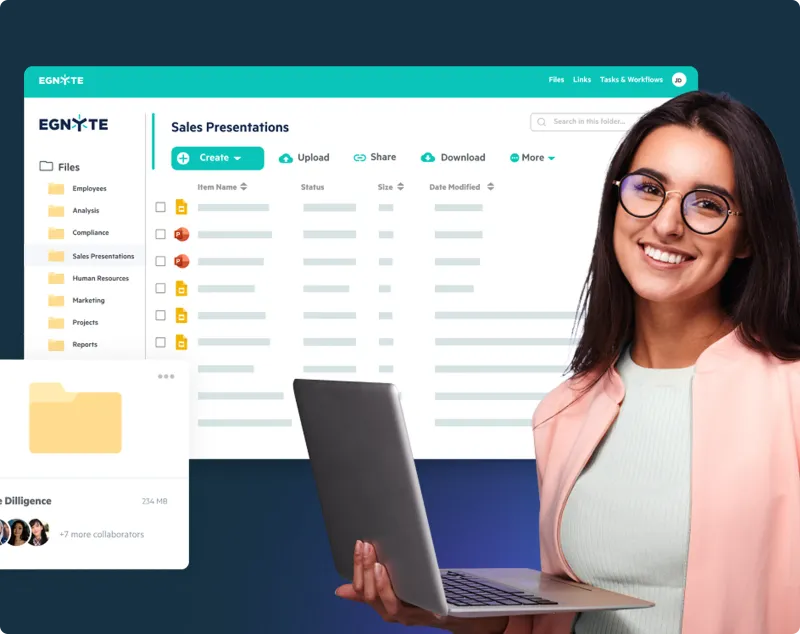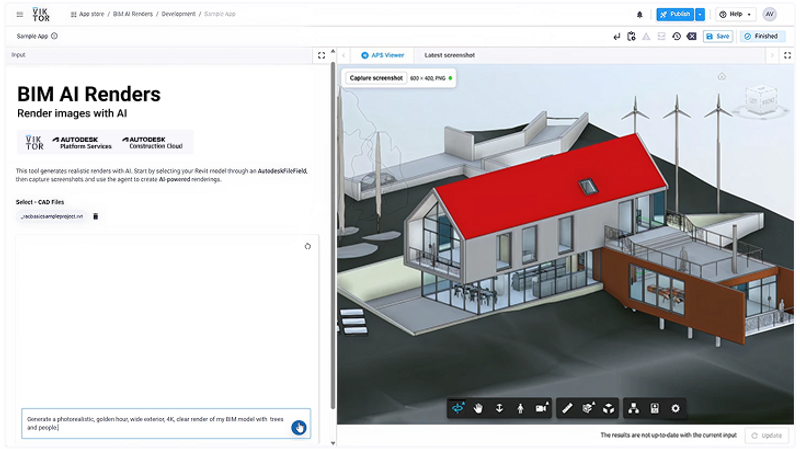Interoperability, Ecosystem, and Beyond: Architecture Design Workflow perfected through Autodesk Forma
With AU - Autodesk University 2023 not very far behind us, the software giant has made very large and necessary strides in refining the Design and Make agenda of our profession. A number of sessions, seminars, and discussions at this AU focused on key areas of concern in the industry, and ways to overcome them, with improved collaboration, increased operational efficiency, reduced environmental impact, diversified service offerings, and so on. Autodesk compellingly exhibited all the solutions that it fosters in pushing the aforesaid objectives. And Forma, its newest design tool for Architects, stood out in a lot of the proceedings this year, owing to the many problem areas it tackles for Architects in a single SaaS package.
We delved deep into many of Forma's capabilities in concept and schematic design phases, in our last article. But after this AU, it’s more than apparent that it’s not just going to be another tool in the Architect’s arsenal: Autodesk Forma is envisioned to be an ecosystem of tools, workflows, services, and solutions that completely equip designers in the early stages of a project. The ecosystem extends to access other commonly used tools and products, and communicate and interoperate across platforms to maximize the utility of Forma and its capabilities.

Fig. 1) Autodesk Forma working side-by-side with Rhinoceros3D
But interoperability is not the sole objective behind crafting such an ecosystem: its creators see it as a pool of developers, design technologists, and architects solving very crucial problems, and availing these solutions for other users on Forma.
In essence, it is highly similar to a design technology department in a large practice easing/automating the tasks of Architects in various areas of a design project. Autodesk is steadfast on transforming this into reality, leveraging the knowledge in the community to solve problems for the community. They have started off with an open ecosystem, first by rolling out APIs and enabling the interoperability between most commonly used modeling tools and Forma, while laying out the groundwork for more solutions to be crowd-sourced and availed, from the professional community using it. Read on to find out how!
Native capabilities of Forma and beyond
You may recall this from our previous article: Forma’s capabilities are beneficial to Architects in three ways. First, it provides you with all the real-world information you need about your project and its context, even before you start sketching. Second, it enables you to brainstorm, sketch, model, mass, design, and solve problems in its collaborative design environment. You go on to explore the design space of your project, while being informed of the constraints and limitations. Third, Forma lets you analyze your design iterations real-time, to evaluate your solutions with respect to environmental factors, economic attributes, etc., and improve and optimize your solutions to suit your project’s objectives. Forma does an exceptionally good job with the features it’s natively built with; it achieves most objectives of a project to a really good degree, in early design stages.

But most Architecture offices already have an established way of working during concept and schematics, with software tools that they are comfortable with. How does Forma fit into this cycle without disrupting a tried and tested workflow? In short, using its robust interoperability features to transfer data both to and fro, and Autodesk is rapidly moving towards enabling you to use all your favorite tools and software right alongside Forma!
Interoperability in practice
Take for example the most commonly used tool in medium and large-sized practices for early-stage design: Rhinoceros. Autodesk augments your usual workflow with the Rhino3D add-in, in the following way.
You start your project as you usually would on Rhinoceros. But you also concurrently start it alongside, on Forma. You specify the location of your project in a city, and mark out your site. Forma gives you all the background information you need for that particular context: roads, buildings, topography, etc. Users can thus get a full-fledged 3D context model for their projects in just a few minutes by leveraging Forma.
You can now choose to transfer all this context data into Rhino because that may be your preferred design environment. All you need to do is push data through the add-in, from the Forma scene to Rhinoceros. There you have it, as easy as that: the context information that allows you to sketch inside of Rhino with a good premise of the project’s background.

Upon exploring a design iteration in Rhinoceros, you seek some objective information regarding its environmental performance or economic viability. Again, all you need to do is push the design option from Rhino back to Forma, and you have your design massing/geometry in the Forma scene. Autodesk has fully taken advantage of Forma’s cloud-based nature to link it with other design software with just a URL. Forma then provides you with all the insight from different kinds of analyses to make responsible design decisions, say for reduced environmental impact and improved occupant comfort.
You’re free to explore, evaluate, analyze, and optimize multiple design options at a fraction of the time and cost, all the while using your favorite design software. Plus, users can concurrently open multiple instances of Forma on a web browser and simultaneously analyze many design variants and map their design space, in just a few minutes!

Beyond Interoperability
The interoperability that Forma supports for Rhino, Revit, TestFit, and ShapeDiver are but a few extensions in its capabilities, addressing modeling/geometry creation in your desired environment. But the true potential of Forma’s versatility lies in its emerging third-party ecosystem. The makers of Forma imagine the ecosystem as a wireframe of solutions tailored for the early-design stage in projects, making extensive use of APIs to integrate them all together for access from a single environment.
Like mentioned before, its competences are threefold, and each of its abilities are designed to be feasibly extended by users, for solving specific problems that arise whilst working on projects. In reality, it’s envisioned to look like the following.

In-product Data Purchasing: Anybody can bring in their own data about local contextual information and contribute to the Forma ecosystem, thus functioning as a data marketplace. More local data from different regions can thus be accessed by everyone from this marketplace.
Authoring environment: Forma extends API support to enable your preferred modeling and geometry creation tool - Rhino, TestFit, Revit, ShapeDiver, etc. – to operate alongside, thus providing such tools a primary place in the Forma ecosystem: within the UI itself. Developers can create such UIs and resell them as part of the product.
Analyses Platform: Architects and Developers can create custom analyses best-suited to local needs, be it environmental, economical, etc., and use the ecosystem to resell such workflows to other users. Meanwhile, users also get access to customize native Forma capabilities of real-time environmental analyses to improve their workflows. For example, Norwegian outdoor area requirements, Polish sun-hours requirements, US setback requirements, stormwater analysis, shadow analysis, and whatnot, can all be packaged as individual analyses that could be made use of by anyone on the platform.
The sheer amount of effort that individually goes on inside Architecture practices, in silos, can ideally be decentralized with the Forma ecosystem, such that no two people/entities will spend hours to solve the same problem. A lot of amazing functionality, services, and solutions are being developed by the AECO community lately, and Forma intends to harbor and nurture such solutions in a single third-party ecosystem that can then be accessed by a lot of users. Autodesk is also actively inviting collaborators to develop custom analyses workflows that don't already exist yet in Forma, but would be highly useful for everyone in a market.
In Conclusion
With the development of the Forma ecosystem, Autodesk has distilled a lot of systemic solutions in contemporary AEC workflows into a single product. The multiple extensions, integrations, and services that it supports greatly enable non-specialized Architects and Designers to run nuanced analyses to drive projects towards success, while not modifying their existing workflows in any significant way. Plus, the development of a third-party ecosystem would only encourage Architects and Design Technologists to develop a lot of custom solutions that benefit not only them, but have the option to open it up to numerous other users worldwide.
Exciting times ahead in the AECTech space!
Recent Articles
Learn about the latest architecture software, engineering automation tools, & construction technologies

Pioneering Technical Report Management (TRM™) for AEC Firms: A Quire Deep Dive
Learn how Quire founder Kelly Stratton is reinventing technical reporting in our latest aec+tech interview, where its purpose-built TRM™ platform, WordBank-powered standardization, AI-driven Smart Search, quality control, and the Lazarus knowledge engine come together to help AEC, environmental, and CRE teams cut reporting time and errors while unlocking their institutional expertise.

Moving to the Cloud: Egnyte’s Staged Approach for Architecture Firms
As projects grow, AEC firms are rethinking data management and collaboration. This article outlines Egnyte’s six-stage Architecture Cloud Journey—a practical roadmap for moving from on-premise systems to secure, collaborative cloud environments. From assessment to continuous improvement, it shows how to streamline workflows, strengthen security, and future-proof with AI-ready infrastructure.

SaaS Founders: Are You Timing Your GTM Right?
This article was written by Frank Schuyer, who brings firsthand experience as a founder in the software and SaaS world. In this piece, he explores how founders can unlock faster growth and stronger market traction by integrating go-to-market strategy (GTM) from the very beginning of product development—rather than treating it as an afterthought.

The VIKTOR App Builder: Putting Automation into Every Engineer's Hands
The VIKTOR App Builder is changing how engineers automate their work. Built on VIKTOR’s secure, enterprise-ready platform, it lets users turn calculations, checks, and post-processing tasks into shareable browser-based apps—no coding required. In this interview, CPO Stijn Jansen explains why the team created it, how it bridges no-code, low-code, and full-code workflows, and what it means for the future of AI-assisted engineering.